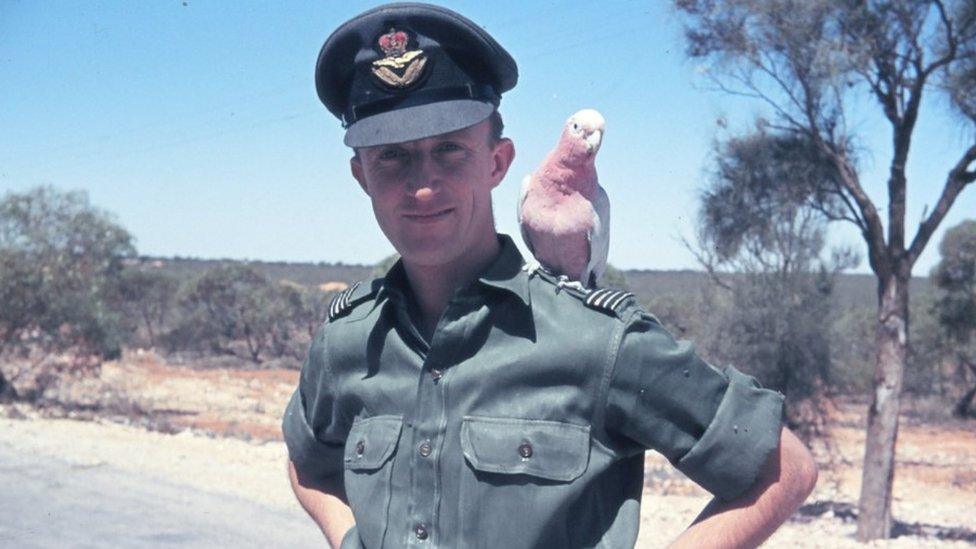Nuclear test veterans: Stik sculpture unveiled at Kent army museum
- Published
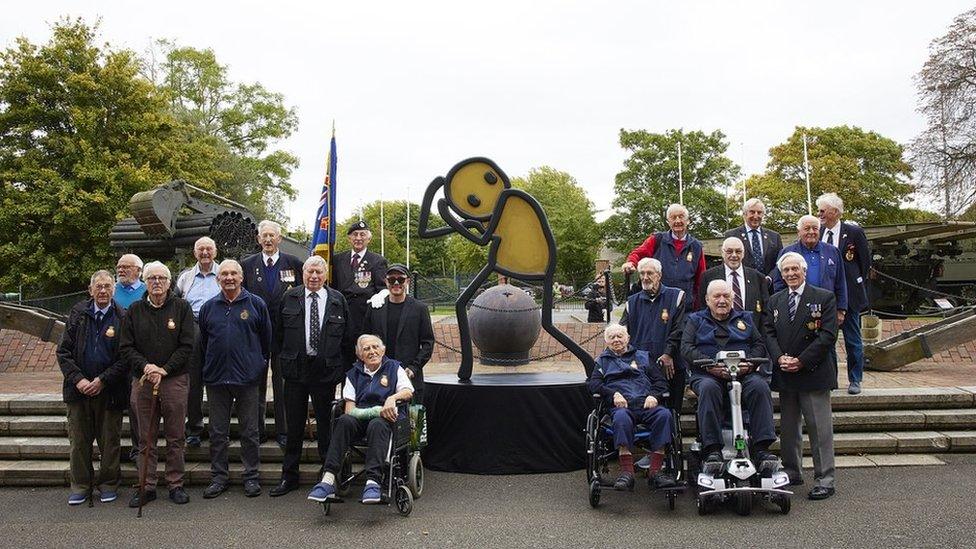
Hackney-based street artist Stik came up with Atomic after listening to first-hand accounts of the tests
A model of a soldier ordered to turn his back and cover his face against a nuclear blast has gone on display at the Royal Engineers Museum in Kent.
London street artist Stik spent a year listening to veterans who witnessed nuclear tests in the 1950s to come up with the "terrified, lone figure".
He said he wanted to show the vulnerability of the soldiers, but also their resilience and strength.
The model will be cast into bronze to create the final sculpture.
In a rare interview, the reclusive artist said he wanted to show human vulnerability, adding: "They were boys when they were sent out to witness an atomic bomb. Some were 16, 17, 18."
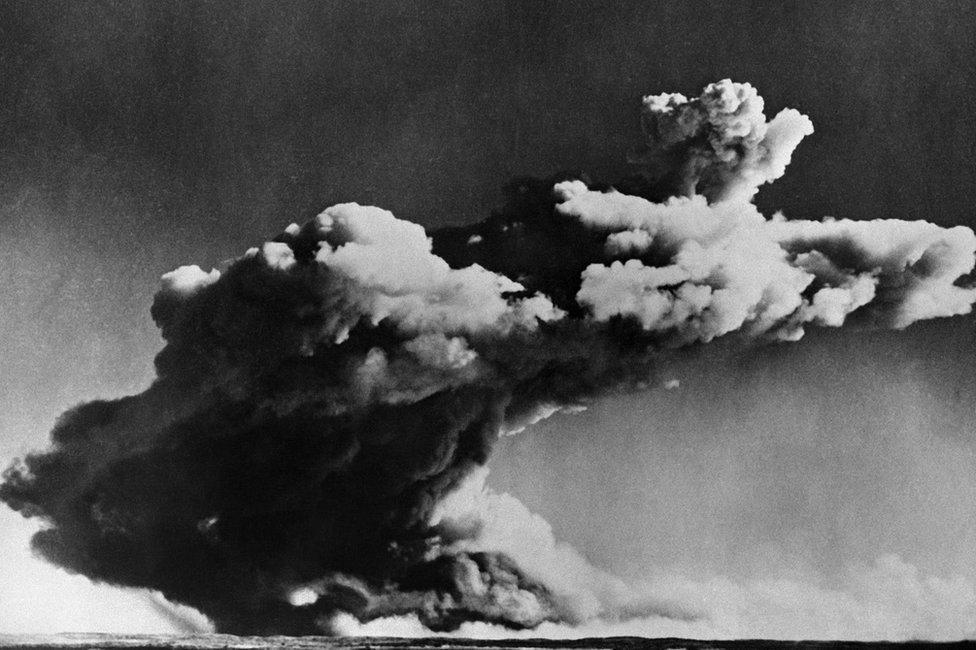
Witnesses have described sitting with their back to the blast but feeling the heat and the force, and being able to see the light through their hands
The sculpture was unveiled at the Gillingham museum during the British Nuclear Test Veterans' Association's (BNTVA) annual conference, which is staged in Ashford on the 70th anniversary of Britain's first weapons test off Western Australia.
For decades, the veterans have fought campaigns for medals, recognition, compensation and an apology from the government, after they witnessed tests with their backs turned to the blast, hands over their eyes, and with no protective clothing.
Many are concerned there is a link between their radiation exposure and ill-health, including cancers.
The Cabinet Office has said it is providing nearly half a million pounds to support veterans. It also said it would hold an oral history project and a commemorative event.
The Ministry of Defence has previously said there was "no valid evidence" linking the nuclear tests to ill-health.
Allow X content?
This article contains content provided by X. We ask for your permission before anything is loaded, as they may be using cookies and other technologies. You may want to read X’s cookie policy, external and privacy policy, external before accepting. To view this content choose ‘accept and continue’.
Stik, who has joined the BNTVA, said: "I want the veterans to have the recognition and the compensation they are fighting for. This is my solidarity with them. People don't know about this and that's awful. When I see people who are invisible - that's important to me."
He said he felt a connection with that invisibility, having experienced homelessness himself.
He re-created his minimalist stick figure, made up of six lines and two dots, around the radioactive symbol - a symbol that he said was used in fashion and popular culture and already losing meaning.
Suggestions are being sought for a permanent site for the final sculpture. Ideas so far have included Parliament Square, the Science Museum, Kings Cross Station in London, and Aldermaston, home to the Atomic Weapons Establishment.

Stik said he had created a figure with its "arms clutched protectively over his head, eyes turned skyward witnessing the unseen horror of a nuclear bomb for the first time"

Follow BBC South East on Facebook, external, on Twitter, external, and on Instagram, external. Send your story ideas to southeasttoday@bbc.co.uk, external.
Related topics
- Published3 October 2022

- Published6 September 2022
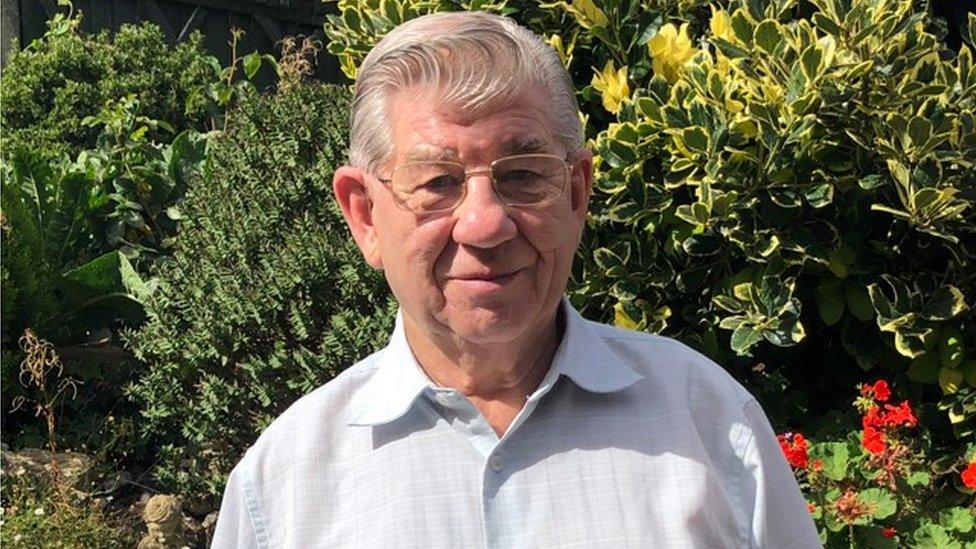
- Published22 June 2021
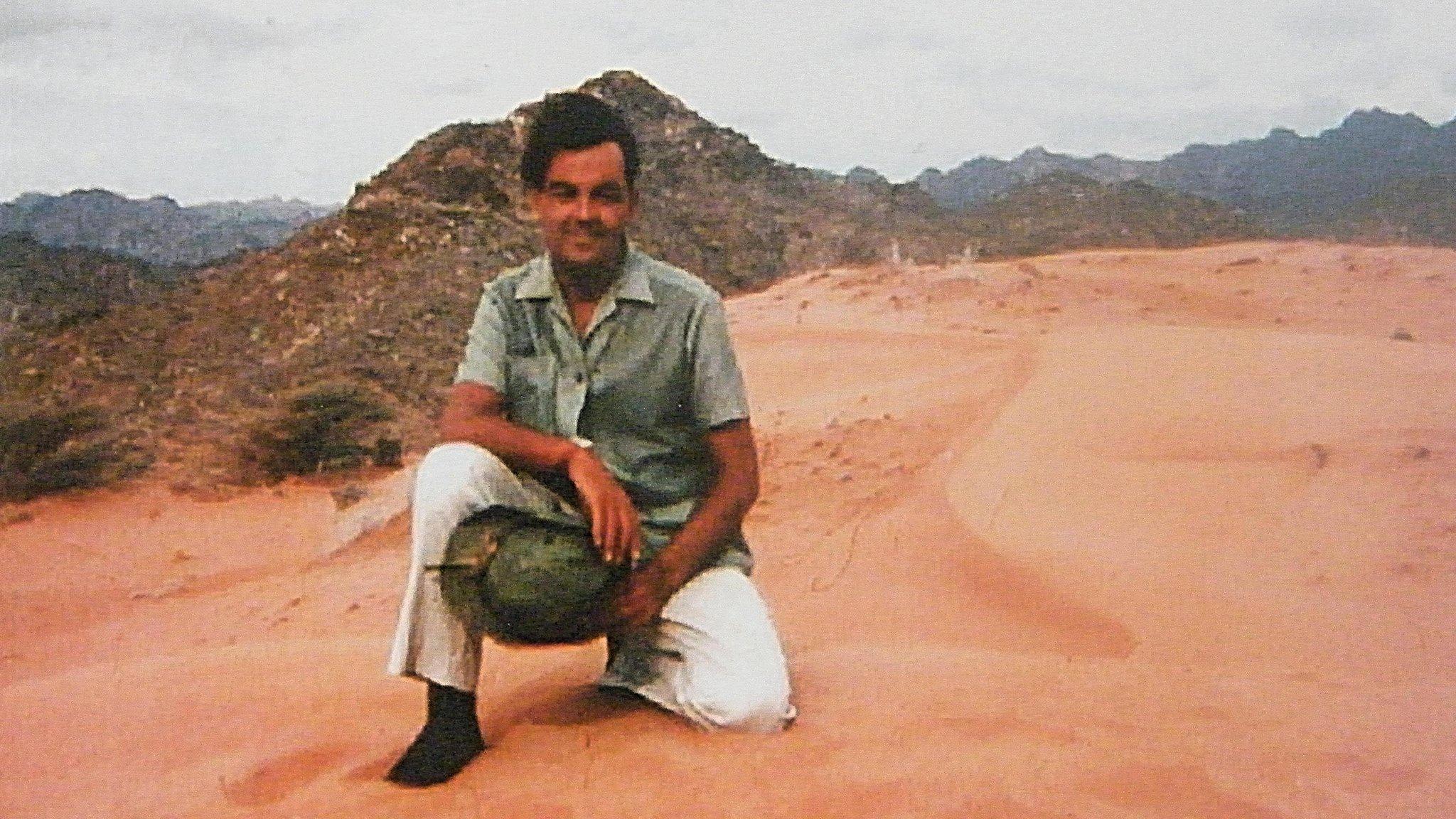
- Published30 May 2021
